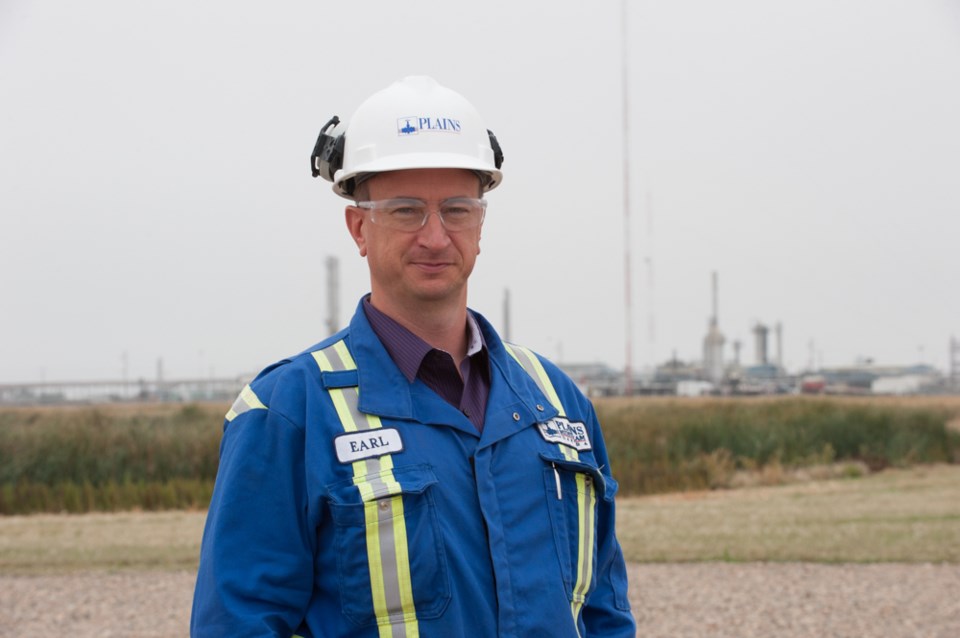Steelman– When Plains Midstream Canada’s district manager for LPG (Liquified Petroleum Gases) comes down to oversee the annual turnaround at the company’s Steelman gas plant, he stays at the Hotel McLaren, northwest of Arcola.
That’s because for Earl McLaren, he’s coming home.
The professional engineer grew up on a mixed farm northwest of Arcola, tucked up next to hills. He graduated from Arcola High School in 1992 and took geological engineering at the University of Saskatchewan.
“I came back here for summers. I worked for Talisman one summer. My last summer (as a summer student) was with PanCanadian in Calgary,” he said.
However, in 1996 PanCanadian cut its hiring, and McLaren didn’t make the cut. He got on as a summer relief operator with SaskOil/Wascana Energy. Wascana moved its headquarters first to Edmonton then Calgary in 1996 when he started as a production engineer.
McLaren was part of the last cohort of engineers who were able to get their professional engineering designation in two years. After that, all engineering grads in Saskatchewan had to put in four years before they could earn their P.Eng.
He worked two years with Wascana when, in 1998, Canadian Occidental Petroleum Ltd. purchased Wascana. This was right around the time of the 1998 downturn, and McLaren wasn’t enthused about working for the new company, noting there was a lot of negativity at the time of the merger. He had been quite happy working with Wascana.
“I worked for bubblegum and peanuts and I didn’t care. They’d give you as much rope as you could take,” he said of Wascana.
He was responsible for a shallow dry gas area south of Fort McMurray, where the wells were as shallow as some drinking water wells you might find in Saskatchewan. They were 120 to 350 metres deep, low pressure, but good producers.
From there he started working on environmental concerns, including volunteering to handle forestry issues. If a caribou run interfered with a planned pipeline route, they’d have to find a way to accommodate that run.
“I quit to move to Amoco. A headhunter called me,” he said. That was in 1998. He ended up working in the same tower, but three floors up.
“I made the move, and I signed on a Thursday. On Monday, BP merged with Amoco.”
In 2012, Plains Midstream bought of BP’s Canadian natural gas liquids assets, resulting in McLaren joining Plains.
Among his responsibilities today are gas plants and associated infrastructure at Steelman, Glen Ewen and Kerrobert in Saskatchewan, and Empress, Buck Creek, Fort Saskatchewan and High Prairie in Alberta. That includes storage caverns at Kerrobert, one of which is under construction, and crude-by-rail facilities which are nearing completion.
McLaren is married and he and his wife, Lindsay, have three daughters. Lindsay is an environmental scientist. They reside in Androssan, Alta.




